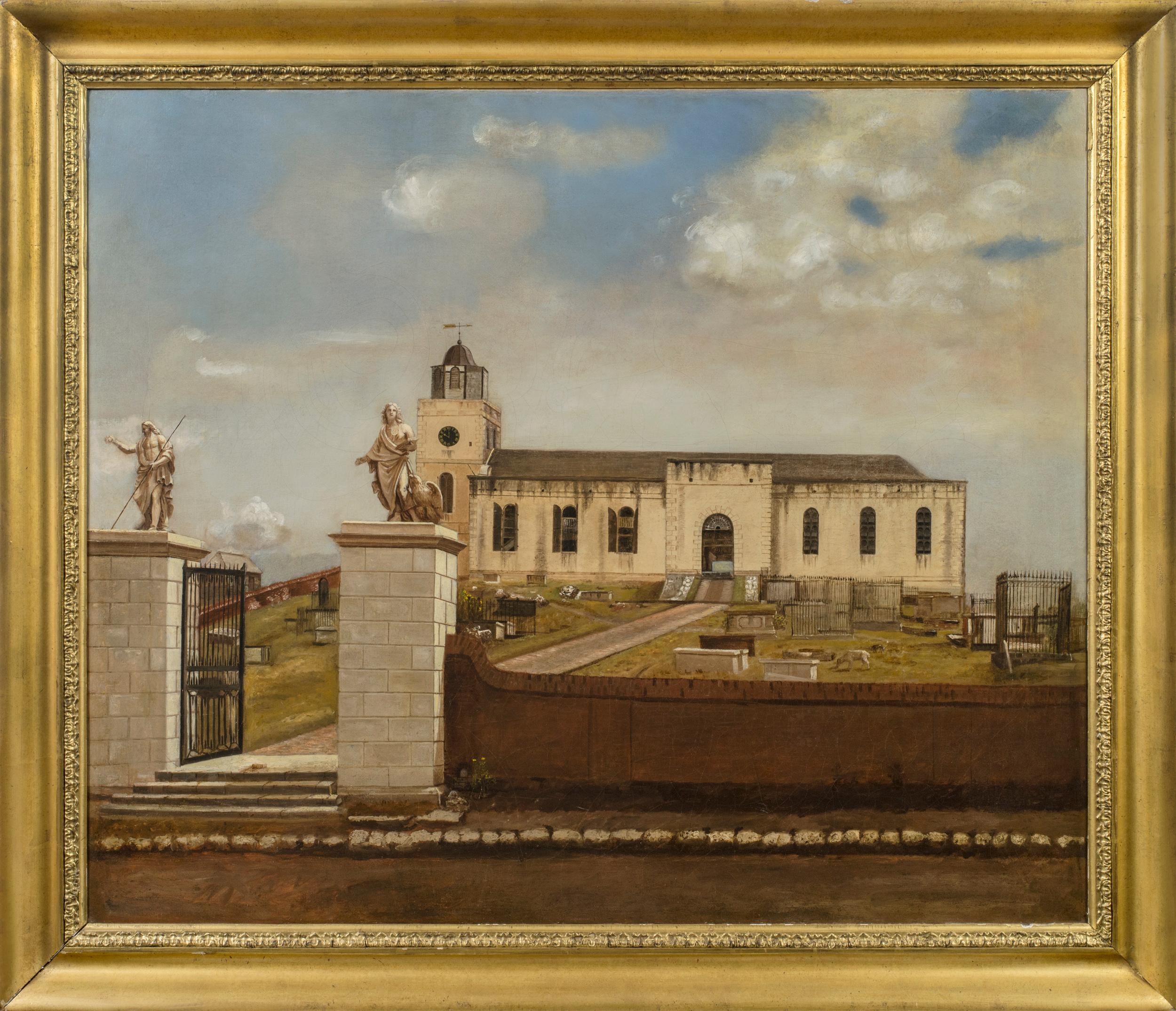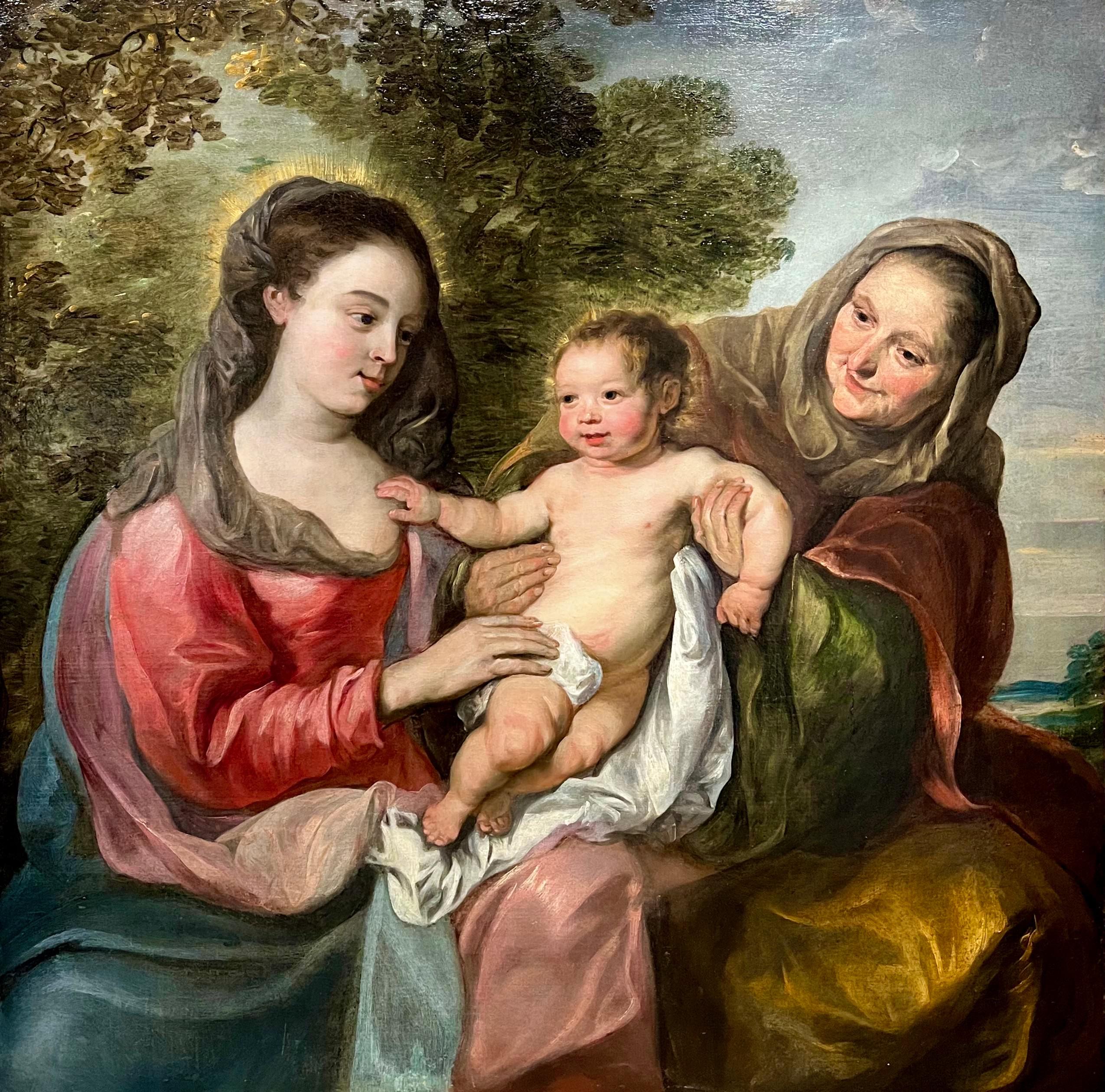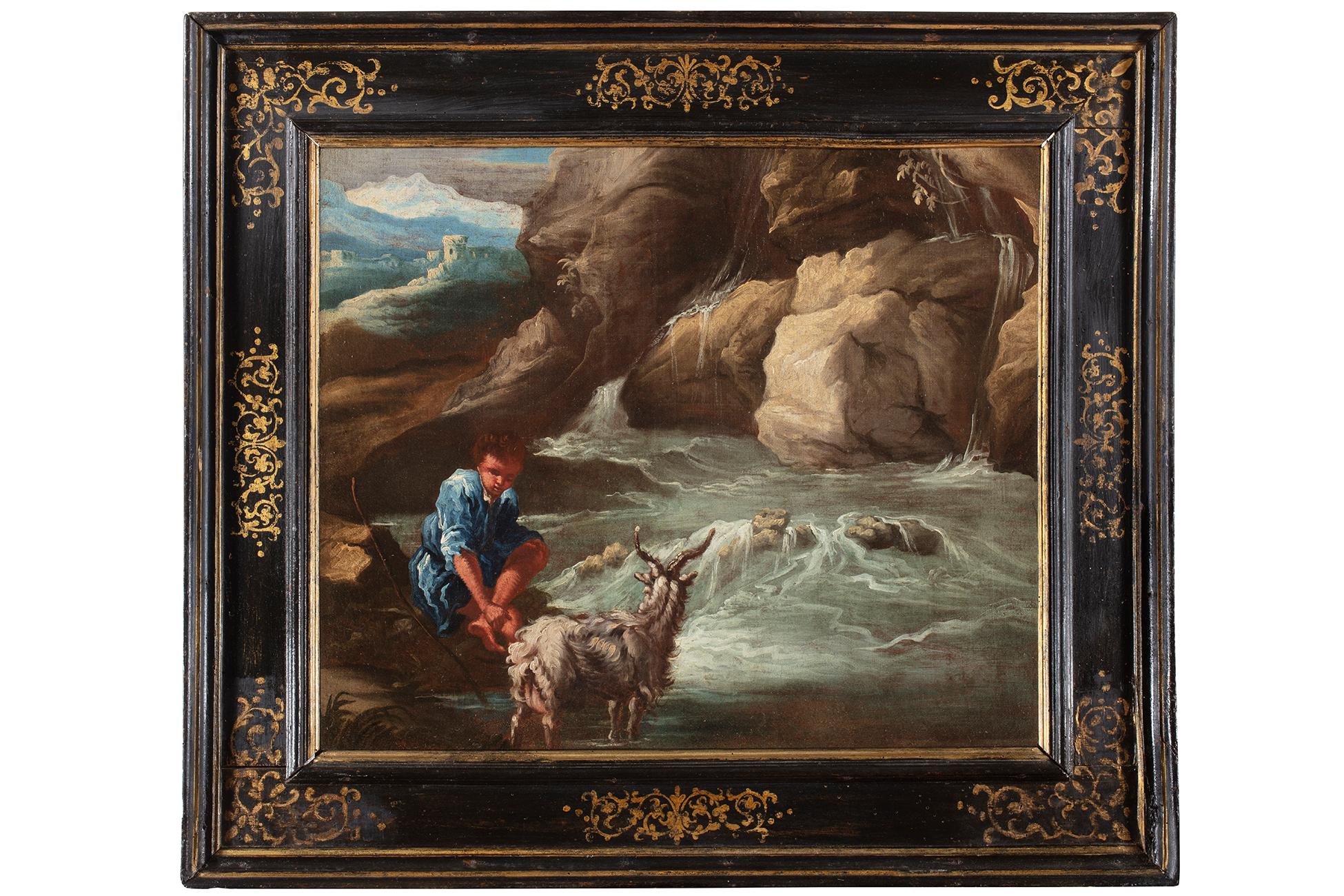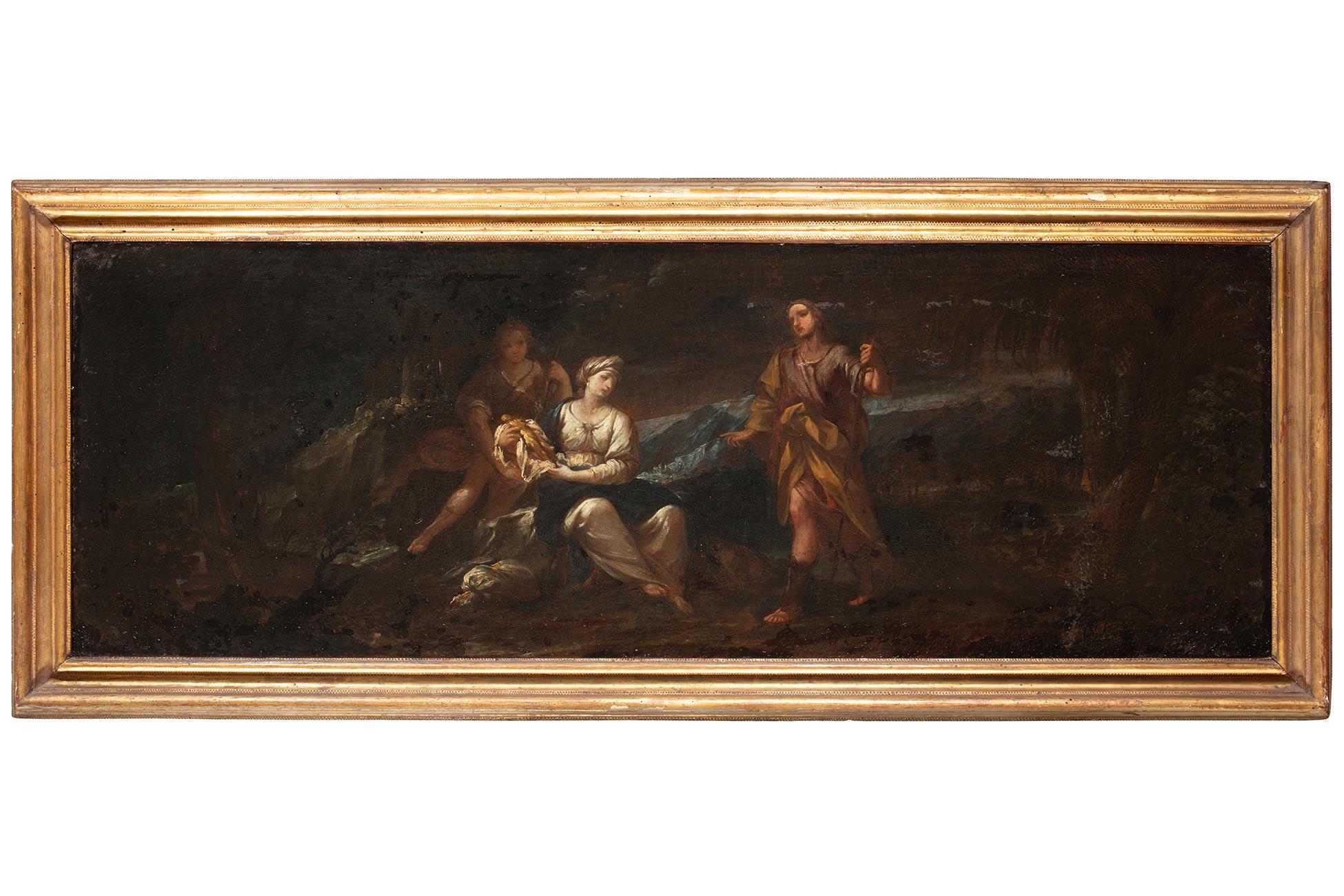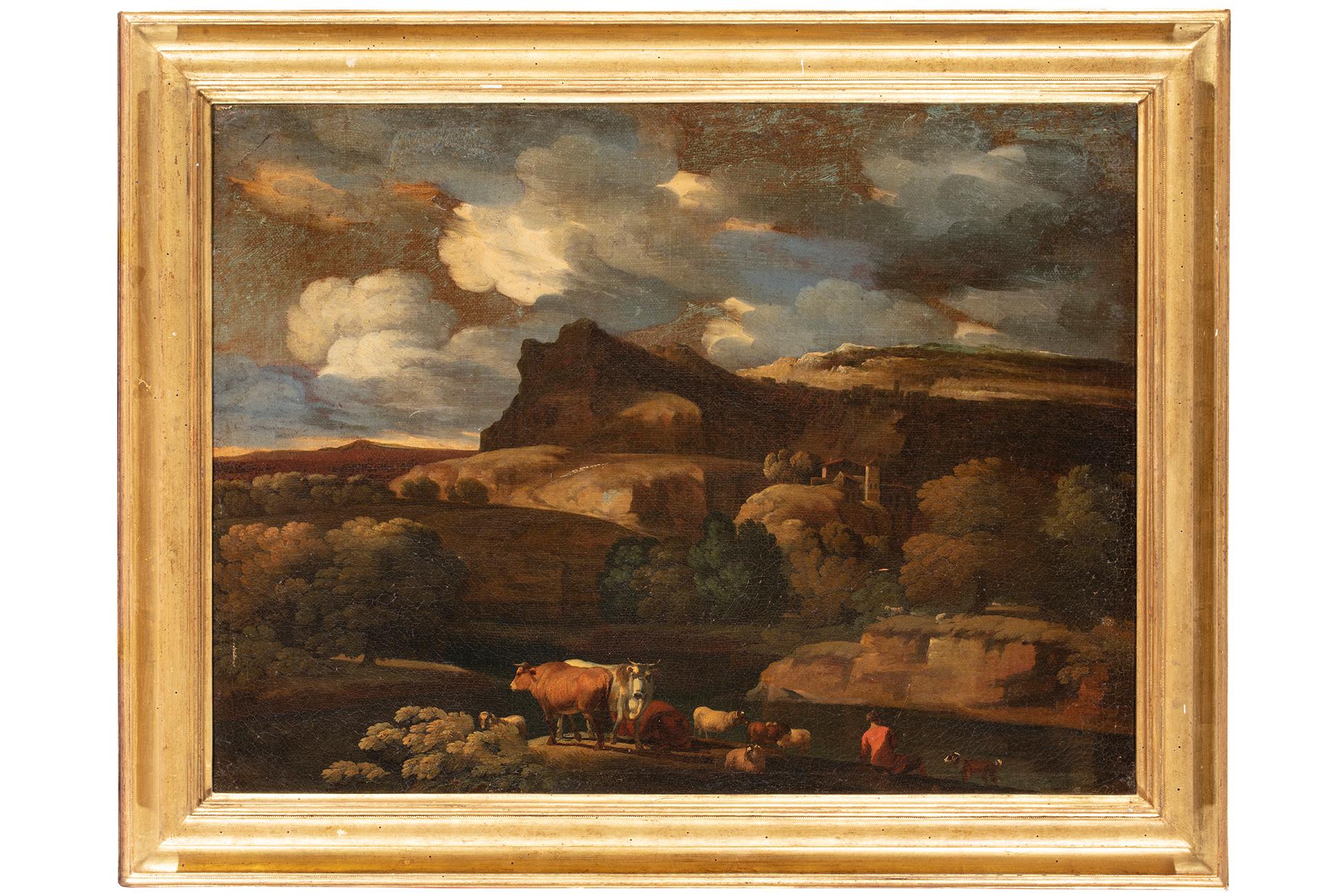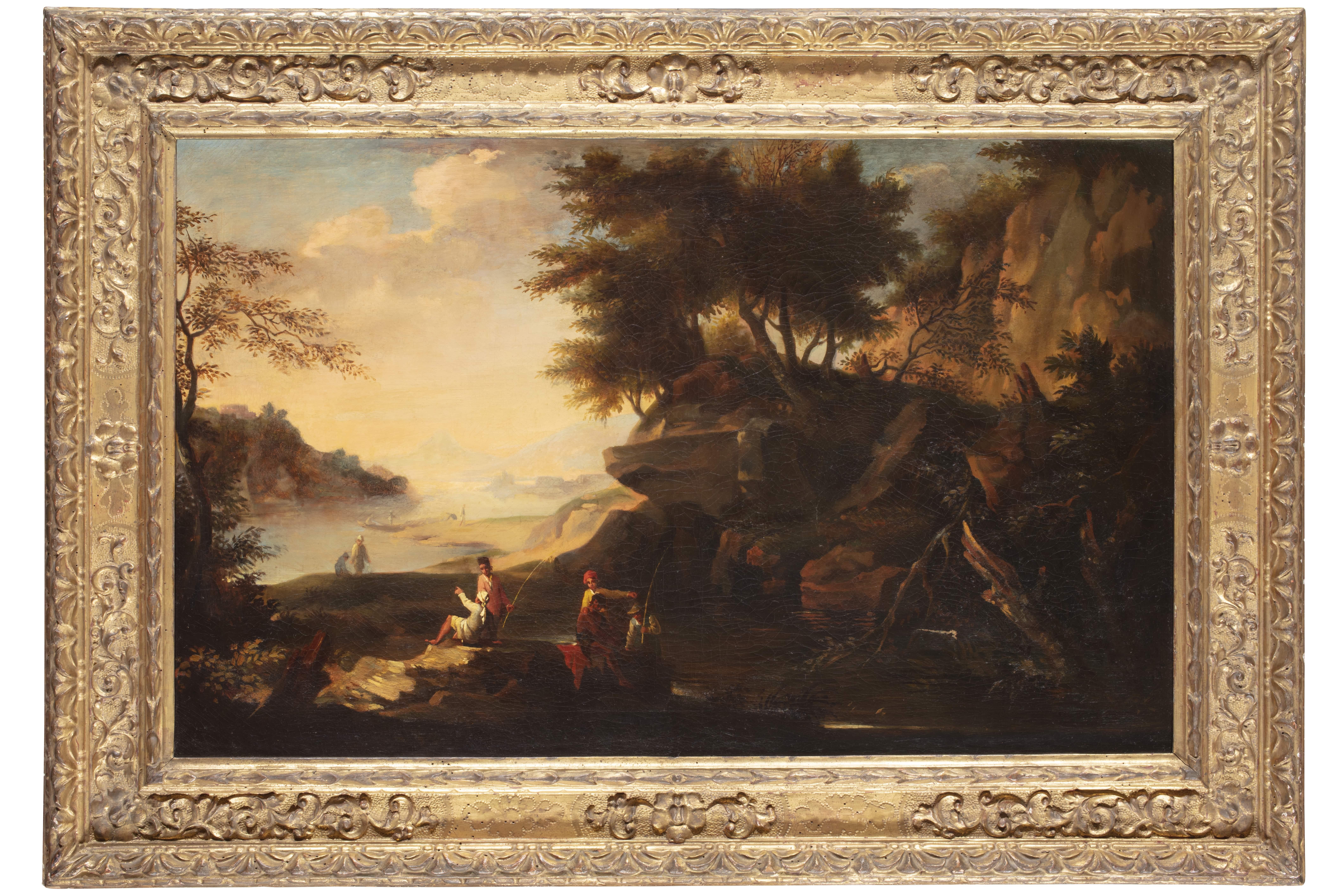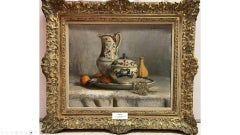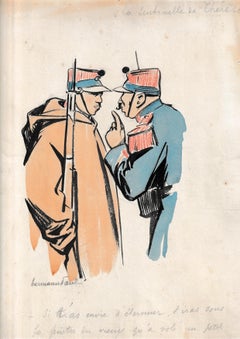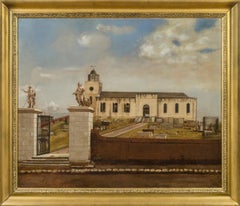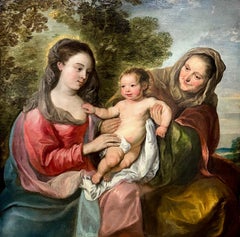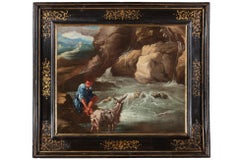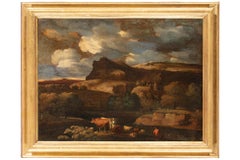Items Similar to Follower of H. Van Swanevelt, Shepherds and their flock on a path, oil on canvas
Want more images or videos?
Request additional images or videos from the seller
1 of 16
Follower of H. Van Swanevelt, Shepherds and their flock on a path, oil on canvas1700
1700
$2,526.23
£1,884.19
€2,160
CA$3,463.76
A$3,891.15
CHF 2,070.82
MX$48,115.51
NOK 25,233.22
SEK 24,396.90
DKK 16,433.81
Shipping
Retrieving quote...The 1stDibs Promise:
Authenticity Guarantee,
Money-Back Guarantee,
24-Hour Cancellation
About the Item
Dutch school, follower of Herman van SWANEVELT (1603-1655), Shepherds and their flock on a path, oil on canvas, circa 1700 – good condition
Wooden frame
Canvas without frame : Height: 30 cm; Width: 40.5 cm
On the back, old label indicating “BERCHEM, Paysage”
This work has similarities with van Swanevelt's landscapes.
—
Bibliography :
Anne Charlotte Steland, Herman van Swanevelt (um 1603-1655), Gemälde aun Zeichnungen, (2 vol.), Michael Imhof Verlag, 2010
Susan Russell, The Roman Years of Herman van Swanevelt, Edizioni Quasar, 2019
A first exhibition “The landscapes of Herman van Swanevelt (1603-1655)” was held in 2007 at the Stadsmuseum, Woerden.
The Grenoble museum has a very beautiful landscape by him, from 1644, measuring 88 x 89 cm (see the painting here on the museum website).
- Creation Year:1700
- Dimensions:Height: 11.82 in (30 cm)Width: 15.95 in (40.5 cm)
- More Editions & Sizes:30 x 40.5 cmPrice: $2,281
- Medium:
- Movement & Style:
- Circle Of:Herman van Swanevelt (1600 - 1654, Dutch)
- Period:Late 17th Century
- Condition:
- Gallery Location:PARIS, FR
- Reference Number:Seller: 1015-HST1stDibs: LU2822215597652
About the Seller
New to 1stDibs
Joined in the past six months.
No Reviews Yet
Vetted Professional Seller
Every seller passes strict standards for authenticity and reliability
1stDibs seller since 2024
Typical response time: 11 hours
- ShippingRetrieving quote...Shipping from: PARIS, France
- Return Policy
Authenticity Guarantee
In the unlikely event there’s an issue with an item’s authenticity, contact us within 1 year for a full refund. DetailsMoney-Back Guarantee
If your item is not as described, is damaged in transit, or does not arrive, contact us within 7 days for a full refund. Details24-Hour Cancellation
You have a 24-hour grace period in which to reconsider your purchase, with no questions asked.Vetted Professional Sellers
Our world-class sellers must adhere to strict standards for service and quality, maintaining the integrity of our listings.Price-Match Guarantee
If you find that a seller listed the same item for a lower price elsewhere, we’ll match it.Trusted Global Delivery
Our best-in-class carrier network provides specialized shipping options worldwide, including custom delivery.More From This Seller
View AllVols aimés, Arapongas, oil on canvas, 1984, 146 x 104 cm, signed and dated
Located in PARIS, FR
Charles GIAI-GISCHIA (born in 1956), Loved Flights, Araponga, oil on canvas, signed, titled and dated 1984 at the bottom, 146 x 104 cm. Excellent condition.
Excerpt from his biogra...
Category
1980s Contemporary Abstract Paintings
Materials
Oil
Still Life With Cherries, Oil on canvas signed lower right
Located in PARIS, FR
Pierre PALUÉ (1920-2005), Still life with cherries, oil on canvas signed lower right, 44.5 x 59 cm, 65 x 80 cm with the frame.
Pierre Palué was born in Bordeaux on May 13, 1920. In ...
Category
1980s Modern Still-life Paintings
Materials
Oil
Still life with a pearl necklace, oil on canvas
Located in PARIS, FR
Gustave DURAND (1863 – 1938), Still life with a pearl necklace, late 19th century – early 20th century, oil on canvas, signed upper right, 60 x 73 cm
Good general condition of the c...
Category
Late 19th Century French School Still-life Paintings
Materials
Oil
"La sentinelle de Thérèse", c. 1914-1918, drawing and gouache, signed
By René Georges Hermann-Paul
Located in PARIS, FR
"La sentinelle de Thérèse" (The Sentinel of Therese), two soldiers discussing, bears a handwritten note at the bottom "if you feel like sneezing, you will go under the window of the ...
Category
1910s French School Figurative Drawings and Watercolors
Materials
Watercolor, Gouache, Carbon Pencil
Pair of herons in chiseled bronze with green patina, 20th century (1960s)
Located in PARIS, FR
The Herons, pair of chiseled bronze subjects, the body with a green patina and the head with a purple patina, 1960s-1970s. The two herons or storks are presented in different attitud...
Category
1970s Naturalistic Figurative Sculptures
Materials
Bronze
Two Porcelain Penguins, Bing & Grondahl Manufactory, 20th century
Located in PARIS, FR
Armand PETERSEN (1891-1969) for Bing & Grondahl, Two penguins in polychrome enameled porcelain, each marked under the right paw with the stamp of the Manufacture in green enamel, acc...
Category
Late 20th Century Naturalistic Figurative Sculptures
Materials
Porcelain
You May Also Like
View of St. John’s Cathedral, Antigua
Located in New York, NY
Provenance:
Robert Hollberton, Antigua, ca. 1841
Private Collection, New York
The present painting depicts Old St. John’s Cathedral on the island of Antigua. The church was erected in the 1720s on the designs of the architect Robert Cullen. It measured 130 feet by 50 feet with north and south porches 23 x 20 ½ feet. The tower, 50 feet high with its cupola, was added in 1789. The church was elevated to the status of a cathedral, but disaster struck in the form of an earthquake that destroyed the building on 8 February 1843. A memorandum of that date relates the event:
“On Wednesday, 8th February, 1843, this island was visited by a most terrific and destructive earthquake. At twenty minutes before eleven o’clock in the forenoon, while the bell was ringing for prayers, and the venerable Robert Holberton was in the vestry-room, awaiting the arrival of persons to have their marriage solemnized, before the commencement of the morning service, the whole edifice, from one end to the other, was suddenly and violently agitated. Every one within the church, after the first shock, was compelled to escape for his life. The tower was rent from the top to the bottom; the north dial of the clock precipitated to the ground with a dreadful crash; the east parapet wall of the tower thrown upon the roof of the church; almost the whole of the north-west wall by the north gallery fell out in a mass; the north-east wall was protruded beyond the perpendicular; the altar-piece, the public monument erected to the memory of lord Lavington, and the private monuments, hearing the names of Kelsick, Warner, Otley, and Atkinson, fell down piecemeal inside; a large portion of the top of the east wall fell, and the whole of the south-east wall was precipitated into the churchyard, carrying along with it two of the cast-iron windows, while the other six remained projecting from the walls in which they had been originally inserted; a large pile of heavy cut stones and masses of brick fell down at the south and at the north doors; seven of the large frontpipes of the organ were thrown out by the violence of the shock, and many of the metal and wooden pipes within displaced; the massive basin of the font was tossed from the pedestal on which it rested, and pitched upon the pavement beneath uninjured. Thus, within the space of three minutes, this church was reduced to a pile of crumbling ruins; the walls that were left standing being rent in every part, the main roof only remaining sound, being supported by the hard wood pillars.”
The entrance from the southern side into the cathedral, which was erected in 1789, included two imposing statues, one of Saint John the Divine and the other of Saint John the Baptist in flowing robes. It is said that these statues were confiscated by the British Navy from the French ship HMS Temple in Martinique waters in 1756 during the Seven Years’ War and moved to the church. The statues are still in situ and can be seen today, much as they appeared in Bisbee’s painting, but with the new cathedral in the background (Fig. 1).
Little is known of the career of Ezra Bisbee. He was born in Sag Harbor, New York in 1808 and appears to have had a career as a political cartoonist and a printmaker. His handsome Portrait of President Andrew Jackson is dated 1833, and several political lithographs...
Category
19th Century Old Masters Landscape Paintings
Materials
Canvas, Oil
Large 17th century religious family painting - Mary with Christ and Anna
Located in Aartselaar, BE
17th century Old Master painting depicting the Infant Christ with Mary and St. Anne attributed to Nicolas de Liemaker
The artist of the present work wonderfully captured the loving gaze of Maria, looking in awe at her child. One can sense the tenderness and love in her eyes. The eyes of Christ appears to be filled with wisdom and love and a finely painted aura crowns his and his mother's heads. St. Anne, Mary's mother, gently holds the infant whilst gazing adoringly at him. The painting is not only a beautiful depiction of Christ and his mother and grandmother, but also a sweet image of the tender bond between a mother's and their children. The vibrant and soft colours of the fabric create a soft cocoon around the figures and seem to further emphasis the beauty and importance of the depicted scenery and its protagonists.
Nicolaas de Liemaecker (also spelled as Liemaker or Liemackere) was a Flemish painter born in Ghent in 1601. He was also known under the name Nicolaas Roose. His father was Jacobus de Liemaecker, a painter upon glass. Nicolaas is reported to have been trained by his father and Gaspard de Crayer II (1), an apprenticeship with Otto Van Veen has also been suggested. In 1624 he worked at the Court of the Bishop of Paderborn and for Ferdinand of Bavaria. He later returned to his native city, where he focused on religious and historical paintings. He was a very accomplished and celebrated artist who attained a high rank in his profession. He witnessed the baptisms of Pieter and Janne-Marie Van Hulle...
Category
17th Century Old Masters Figurative Paintings
Materials
Canvas, Oil
18th Century by Giuseppe Pianca Shepherd with Goat and River Oil on Canvas
Located in Milano, Lombardia
Giuseppe Antonio Pianca (Agnona di Borgosesia, Italy, 1703 - Milan, Italy, 1762)
Title: Shepherd with Goat and River
Medium: Oil on canvas
Dimensions: without frame 49 x 57 cm - wit...
Category
18th Century Old Masters Landscape Paintings
Materials
Canvas, Cotton Canvas, Oil
17th Century by Pieter Mulier Landscape Oil on Canvas
By Pieter Mulier known as the Cavalier Tempesta (Haarlem 1637 - Milan 1701)
Located in Milano, Lombardia
Pieter Mulier known as Tempesta (Haarlem, Netherland, 1637 - Milan, Italy, 1701)
Title: Landscape
Medium: Oil on canvas
Dimensions: without frame 49 x 65...
Category
17th Century Old Masters Landscape Paintings
Materials
Canvas, Cotton Canvas, Oil
17th Century by Jacob de Heusch Pair of Landscapes Oil on Canvas
Located in Milano, Lombardia
Jacob De Heusch (Utrecht, Netherlands, 1657 – Amsterdam, Netherlands, 1701)
Title: Pair of Landscapes
Medium: Oil on canvas
Dimensions: without frame 50 x 8...
Category
17th Century Old Masters Landscape Paintings
Materials
Canvas, Oil
17th Century by Felice Torelli Rachel Hiding the Idols Oil on Canvas
Located in Milano, Lombardia
Felice Torelli (Verona, Italy, 1667 - Bologna, Italy, 1748)
Title: Rachel Hiding the Idols
Medium: Oil on canvas
Dimensions: without frame 41 x 116 cm -...
Category
Late 17th Century Old Masters Landscape Paintings
Materials
Canvas, Cotton Canvas, Oil
More Ways To Browse
The Good Shepherd
Mugshots Vintage
Music Box Clock
New York Twa Poster
Norman Rockwell Freedom
Original Vintage Ski Advertising Poster
Painting 1643
Peintre Et Modele
Persian Chest
Peter Max Statue Of Liberty
Peter Rabbit
Picasso Bullfight
Plaza Hotel Silver
Porcelain Black Cat
Prison Window
Railway Posters Somerset
Raphael Soyer On Sale
Retro Mid Century Modern Tattoo
